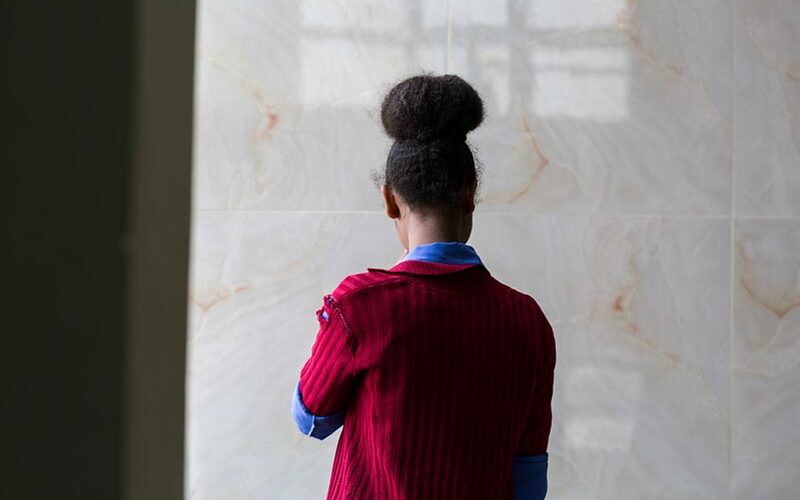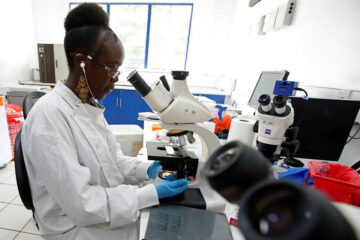
AN estimated 800,000 people die by suicide globally each year. It’s the second most common cause of death in people aged 15 to 29. University students around the globe are more at risk of suicidal behaviour than the general population. It’s important to understand the reasons so that effective interventions can be planned to prevent suffering and death.
An international group of experts, working as part of the World Health Organisation’s World Mental Health International College Student Initiative, has been established to investigate the high rates of psychological distress among students across the globe, and to address the need for a coordinated response to promote mental health. Researchers from Stellenbosch University and the University of Cape Town in South Africa are part of this international network.
Our recent study of first-year students at two large South African universities was part of this initiative. The group we studied had unusually high rates of psychological distress and suicidal behaviour, highlighting the need for campus-based suicide prevention programmes in South Africa.
International studies show that as many as 31% of students report a common mental disorder in the past 12 months – most frequently depression, anxiety and attention difficulties.
The South African data also show that in the previous 12 months, 20.8% of first year students had experienced anxiety and 13.6% had experienced depression. With approximately one third of students reporting symptoms of psychological distress in the previous year. This is concerning because our study found that students’ thoughts about suicide tended to start if they had a mental health problem such as depression or anxiety.
Mental health and suicidal thoughts
We found that 30.6% of students had thoughts of suicide in the past 12 months, 16.6% had made a suicide plan and 2.4% had attempted suicide. These rates are markedly higher than those found in the country’s general population. These are also marginally higher than rates typically found among students in other parts of the world. There are no accurate data about the number of students in South Africa who complete suicide. But anecdotal evidence suggests that deaths as a result of suicide among students in South Africa are also a cause for concern.
Most students in our study were between 18 and 21 years old. But those with suicidal thoughts and behaviours reported that these problems started when they were around 15 or 16 years of age. The onset of suicidality prior to age 11 was very low but increased sharply up to age 18. After that there was a marked decline in onset. Less than 15% of students reported that their suicidality started after they were 18 years old.
More than half (57.2%) of students who’d had thoughts of suicide in the past 12 months went on to make a suicide plan. And 19.1% of those who made a plan went on to attempt suicide.
The most common risk factors for suicide include untreated mental health problems, social isolation, financial difficulties, hazardous substance use and interpersonal conflict. Feeling hopeless, ashamed, powerless and trapped also increase the risk of suicide, particularly if these painful feelings are unbearable and appear to have no end.
Suicidal behaviour is also sometimes associated with impulsivity and impaired problem solving skills.
Way forward
Because of the link between mental health problems like depression and anxiety and thoughts of suicide, it’s important to promote student mental health as part of campus-based suicide prevention programmes. This is particularly important given the poor access to mental health services in South Africa, and the fact that less than a third of students who need psychological support receive the care they need.
More research in South Africa is needed to ensure that suicide prevention strategies are correctly tailored and focused to reach students most at risk. This is important given that mental health resources in South Africa are scarce and universities in the country face considerable resource constraints.
Universities South Africa, an organisation representing South Africa’s universities, recognised the need for action in this area and initiated a national student mental health survey. This research is being funded by the South African Medical Research Council and will be completed this year. The evidence it provides could form the basis of a more scientific approach to promoting student mental health in South Africa and reducing rates of suicide.
Suicide is preventable and effective treatments do exist. It is not always easy to identify someone who is as risk of suicide just from the way they speak or act. But common warning signs include talking about death and expressing hopelessness or unbearable pain. Withdrawing and isolating oneself may also signal danger, especially if the person has a history of previous suicide attempts or substance use.
Help is available. If you are feeling suicidal talk to someone about it, stay connected to others and reach out for help. In a suicidal crisis you should contact your doctor or consult a mental health professional. Life Line and the South African Depression and Anxiety Group also offer support. – The Conversation.














